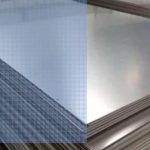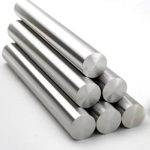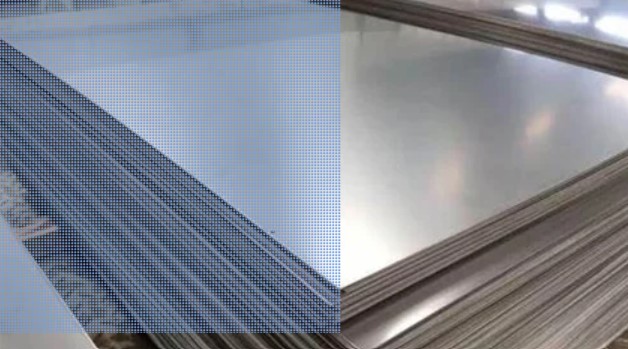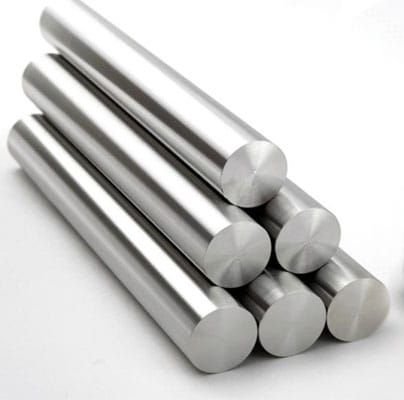In the world of metal materials, few products have achieved the widespread popularity and reliability of stainless steel sheets. Their versatility, durability, and aesthetic appeal make them indispensable in various industries, from construction to food processing. However, one of the most celebrated features of stainless steel sheets is their remarkable corrosion resistance. This article will delve deep into the science and technology behind this key attribute, highlighting why stainless steel sheets are the preferred choice for industries where environmental exposure is a critical concern.
Understanding Corrosion Resistance in Stainless Steel Sheets
Stainless steel sheets are designed with a specific purpose in mind: to resist corrosion. This is one of the primary reasons stainless steel sheets suppliers cater to industries such as chemical processing, marine environments, and architecture. But what exactly gives stainless steel its corrosion-resistant properties?
The secret lies in its composition. Stainless steel is an alloy made primarily of iron, with chromium being its defining element. Chromium, present in stainless steel sheets at a minimum concentration of 10.5%, reacts with oxygen in the air to form a thin, invisible layer of chromium oxide on the surface. This passive layer protects the underlying metal from further exposure to air and moisture, effectively preventing rust and corrosion.
The Role of Chromium in Stainless Steel Sheets’ Durability
When you hear about stainless steel sheets suppliers boasting about their products’ corrosion resistance, they are, in fact, referring to the material’s chromium content. Chromium’s role is essential in forming the oxide layer, which is self-healing. If the surface of stainless steel sheets gets scratched or damaged, the chromium in the steel reacts with oxygen to re-form the protective layer, ensuring long-lasting protection.
But not all stainless steel sheets are created equal. The amount of chromium, along with the presence of other elements like nickel and molybdenum, influences the corrosion resistance of different grades of stainless steel. For instance, higher chromium and nickel content in stainless steel sheets enhances their ability to withstand more aggressive environments, such as salty seawater or acidic conditions.
How Molybdenum Enhances Corrosion Resistance in Stainless Steel Sheets
Stainless steel sheets suppliers often offer products that contain molybdenum, another critical element in boosting corrosion resistance. Molybdenum is particularly effective at preventing pitting corrosion, a localized form of corrosion that can cause small but deep holes in the metal surface. This is especially important for industries such as oil and gas or marine engineering, where stainless steel sheets are regularly exposed to chloride-rich environments, like seawater or industrial chemicals.
Molybdenum enhances the stability of the passive chromium oxide layer, further strengthening the defense against corrosion in stainless steel sheets. This makes it a critical alloying element in grades like 316 stainless steel, which is often used in high-corrosion-risk environments.
Nickel: An Unsung Hero in Stainless Steel Sheets’ Corrosion Resistance
Nickel plays a crucial role in the corrosion resistance of stainless steel sheets. While chromium forms the protective oxide layer, nickel contributes to the overall stability and toughness of the alloy. Stainless steel sheets suppliers frequently offer nickel-containing stainless steels, such as 304 and 316 grades, for applications requiring both corrosion resistance and formability.
Nickel not only stabilizes the structure of stainless steel but also enhances its resistance to oxidizing and reducing environments. In practical terms, this means that stainless steel sheets with a higher nickel content can endure both wet and dry conditions, making them suitable for a wide range of applications, from kitchen appliances to chemical processing plants.
The Importance of Surface Finishing in Stainless Steel Sheets’ Corrosion Resistance
It’s not just the chemical composition of stainless steel sheets that determines their corrosion resistance; surface finish plays a vital role as well. Stainless steel sheets suppliers often provide options like brushed, polished, or mill finishes, each of which offers different levels of protection against corrosion.
A smooth, polished surface is less likely to trap contaminants such as dirt, salt, or moisture, which can initiate corrosion. Conversely, rougher surfaces with more microscopic grooves are more prone to corrosion because they can trap these corrosive agents. Therefore, for applications in harsh environments, stainless steel sheets with a mirror-like, polished finish offer superior corrosion resistance.
Environmental Factors That Affect Stainless Steel Sheets’ Corrosion Resistance
While stainless steel sheets are inherently corrosion-resistant, certain environmental factors can still impact their performance. Stainless steel sheets suppliers frequently caution against exposure to extremely harsh environments without the correct alloy composition or surface finish.
For instance, in coastal or industrial areas where the air contains high levels of salt or sulfur dioxide, even the most corrosion-resistant stainless steel sheets may be vulnerable to surface corrosion. In such cases, grades like 316 or duplex stainless steels, which contain higher levels of molybdenum and nitrogen, are recommended for enhanced protection.
Moreover, the pH level of the surrounding environment can affect stainless steel sheets. Highly acidic or basic conditions can degrade the passive layer, accelerating corrosion. That’s why selecting the appropriate grade for the specific environmental conditions is critical for maintaining the longevity of stainless steel sheets.
Best Practices for Maintaining the Corrosion Resistance of Stainless Steel Sheets
To get the most out of the corrosion-resistant properties of stainless steel sheets, proper care and maintenance are crucial. Stainless steel sheets suppliers often advise regular cleaning, especially in environments with high moisture or salt exposure, such as coastal areas. Simple cleaning with water and mild detergents can help remove corrosive contaminants that may have settled on the surface.
Additionally, using stainless steel sheets in conjunction with other metals should be done carefully to avoid galvanic corrosion. When stainless steel comes into contact with less noble metals, such as carbon steel, in the presence of an electrolyte (like water), the less noble metal can corrode more rapidly. Insulating stainless steel sheets from other metals or using protective coatings can help prevent this type of corrosion.
Why Stainless Steel Sheets Are the Ultimate Choice for Corrosion Resistance
Stainless steel sheets suppliers have long understood that the material’s superior corrosion resistance is a key selling point, and this is why stainless steel sheets dominate industries ranging from construction to chemical processing. Their ability to withstand diverse environmental challenges while maintaining structural integrity and appearance makes them an unparalleled choice for applications requiring durability and longevity.
In summary, the corrosion resistance of stainless steel sheets is not just about chromium content but also about a finely tuned balance of nickel, molybdenum, and other elements. When combined with proper surface finishes and regular maintenance, stainless steel sheets offer a level of protection that is difficult to match with other materials. Whether used in architectural projects, industrial applications, or consumer goods, stainless steel sheets continue to set the standard for corrosion-resistant materials.










